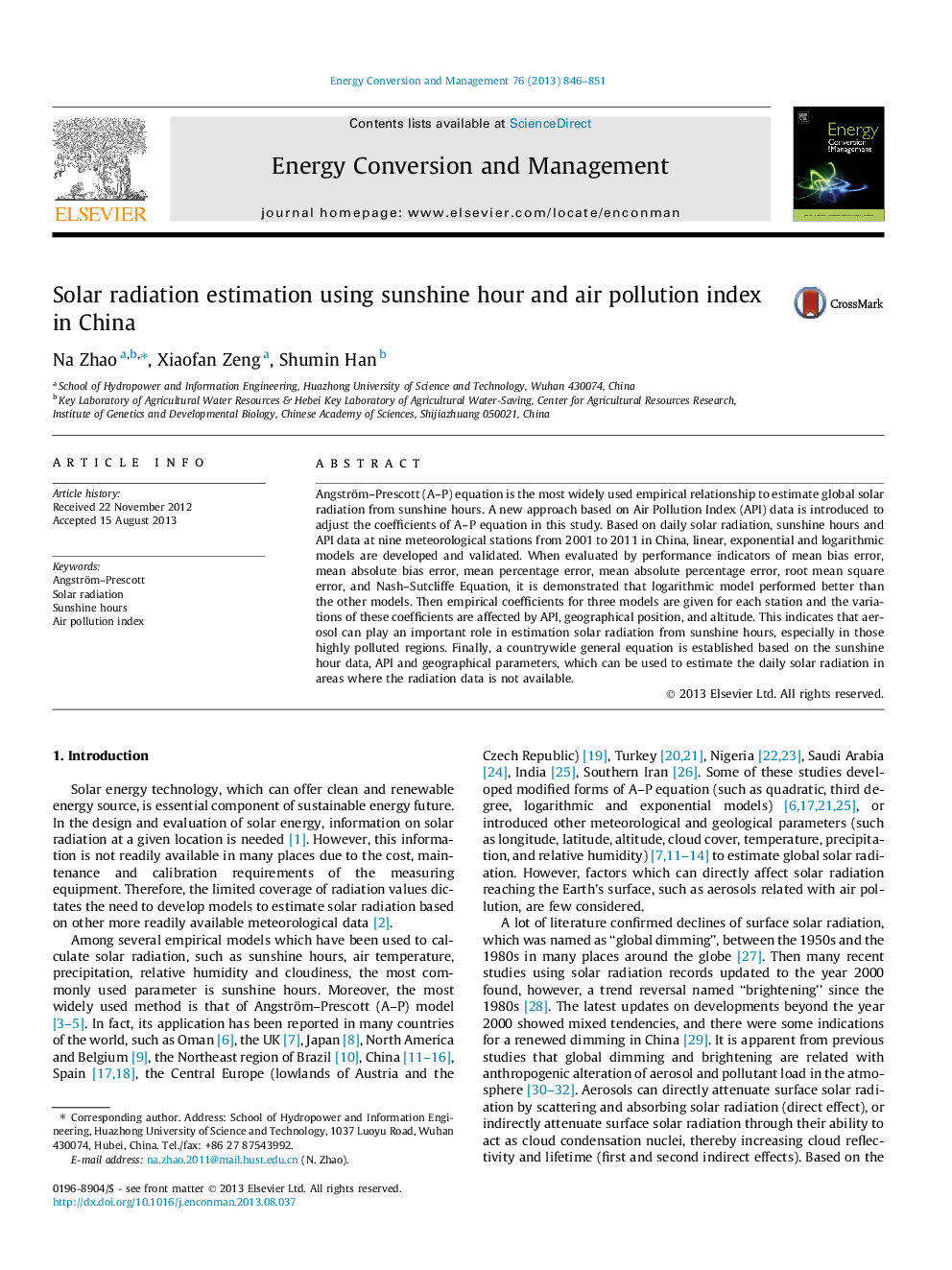| Article ID | Journal | Published Year | Pages | File Type |
|---|---|---|---|---|
| 760843 | Energy Conversion and Management | 2013 | 6 Pages |
•Aerosol can affect coefficients of A–P equation to estimate solar radiation.•Logarithmic model performed best, according to MBE, MABE, MPE, MAPE, RMSE and NSE.•Parameters of A–P model can be adjusted by API, geographical position and altitude.•A general equation to estimate solar radiation was established in China.
Angström–Prescott (A–P) equation is the most widely used empirical relationship to estimate global solar radiation from sunshine hours. A new approach based on Air Pollution Index (API) data is introduced to adjust the coefficients of A–P equation in this study. Based on daily solar radiation, sunshine hours and API data at nine meteorological stations from 2001 to 2011 in China, linear, exponential and logarithmic models are developed and validated. When evaluated by performance indicators of mean bias error, mean absolute bias error, mean percentage error, mean absolute percentage error, root mean square error, and Nash–Sutcliffe Equation, it is demonstrated that logarithmic model performed better than the other models. Then empirical coefficients for three models are given for each station and the variations of these coefficients are affected by API, geographical position, and altitude. This indicates that aerosol can play an important role in estimation solar radiation from sunshine hours, especially in those highly polluted regions. Finally, a countrywide general equation is established based on the sunshine hour data, API and geographical parameters, which can be used to estimate the daily solar radiation in areas where the radiation data is not available.
